Ultimate Guide to Repotting and Wire Bonsai Tree
Why Using a Wire Bonsai Tree
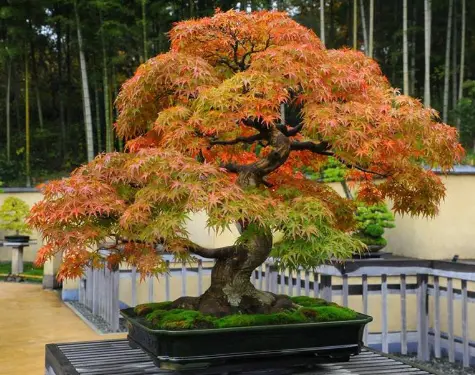
Once you have pruned your tree into the desired shape, it’s time to wire it. A wire bonsai tree helps to give your tree its final form by bending and manipulating the trunk and branches.
When wiring, always use smooth, annealed copper or aluminum wire. Never use anything else as it can damage the tree.
In theory, most tree species may be wired at any time. However, different seasons have benefits and drawbacks for the bonsai and the stylist.
Because many distinct tree kinds are created as bonsai and cultivated in diverse climatic environments, it’s nearly impossible to provide a general rule.
Many tiny cracks occur when the branches are forced into a new form in the bark and cambium layer. These injuries can mend easily and fast during the growing season.
After a few weeks, the new branch position solidifies in deciduous trees. Outside of the growing season, this process takes much longer.
YouTube Bonsai
how to wire a bonsai tree – Wire Bonsai Tree
- Examine your bonsai and determine which branches require styling.
- Prepare your wiring and select the appropriate wire size and length. A thicker wire will be required for larger branches and the trunk.
- Secure the wire. Start by fixing one end of the bonsai wire in the ground or on the trunk. It would help to place the wire into the ground, with the end of the wire 1 – 1 1/2 inches into the soil behind the tree.
- Wire from strong to weak. The wire is attached from the bottom up or starting from the interior to the tree’s exterior, which means it’s always going from the more robust to the less robust part of your bonsai. It may be wired clockwise or counterclockwise, depending on whether you want to bend it left-ward or rightward.
- Wrapping. Wrap the wire tight but without too much pressure to cut into the trunk or branch bark. Wrap the wire at 45 ° angles all the way along until the wire has covered all branches required for bending.
- Hold a branch securely with your fingers, and gently bend the wired branch into the desired position. Keep your thumb pressed against the bend to offer support and reduce the risk of the branch breaking.
- Add gentle curves to a limb to make it look more natural.
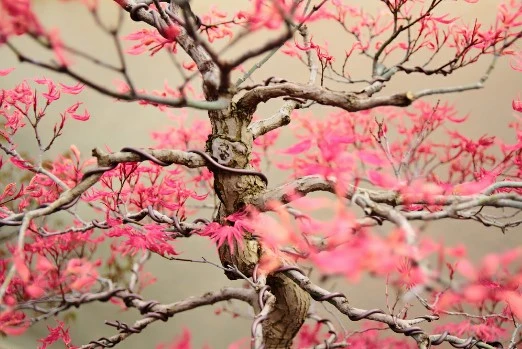
Important Points to Remember When Wiring:
• A single piece of wire may be used to train two adjacent branches. This adds more strength and stability to the branch.
• When you’re ready to move on to the branch or branches you want to shape, make sure the wire has been wrapped at least twice around the tree trunk.
• If you’re bending down a branch, bring the wire up from beneath it. If wiring a limb up-wards, begin above it.
Also Read About Pruning Bonsai
Repotting
Generally, bonsai trees only need to be repotted every three years when their roots become pot-bound. When repotting, be sure to choose a pot that is only slightly larger than the current pot.
Soak the soil in the pot for about an hour to soften the roots, then remove the plant from its container, making sure to gently ease the trunk to one side while removing it from the old pot. Never pull the tree directly up as this may damage the larger roots.
If the root ball is tightly compacted, use a blunt object such as chopsticks or your hand to break up the soil before planting.
Prune the long vertically spreading roots away; this replaces growth to the sideways-growing roots. As a result, these roots will thicken over time and form a natural Bonsai Nebari appearance.
However, if you repot your plants regularly (every 2 – 3 years), trimming vertical roots should be sufficient to encourage surface root growth. When growing young material, some growers put their trees on a stone to force the tree to grow its roots sidewards.
Continue cutting back the fine roots until the remaining root structure is 1/2-3/4 an inch smaller than the inside edge of the new pot. Do this to the root’s depth as well.
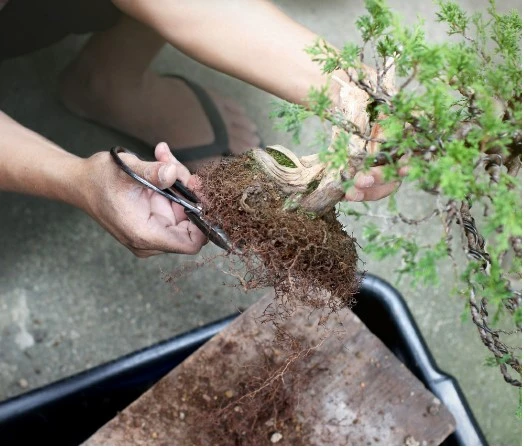
Next, cover the new pot’s drainage hole with wire mesh just large enough to cover the hole, and use wire to secure it to the hole. The mesh will stop soil from falling out and aid with water drainage.
You will also want to anchor your bonsai to the new pot using thick gauge wire. Start by cutting a long piece and threading it through the wire mesh in the bottom of the pot to form a U-shape, leaving both wire ends sticking up out of the pot. Then cut off any excess wire and push it into the soil, hiding it from sight.
When you have finished pruning the roots and are ready, place the tree in the new pot, and wrap the ends of the wire over the roots, twisting the ends together firmly over the root system. Similar to how you would wrap a present with string.
Finally, the bonsai should be planted at the same depth it was in its previous container. Use bonsai soil to fill the new pot and place the tree in the center. Gently backfill the hole with soil, being careful not to compact it. Water the tree twice and put it in a sunny spot.
What to keep in mind when repotting;
- The best time to repot. Early spring is the best time to repot when the climate starts to turn milder, between 46 – 50 °F (8 – 10 °C), and just before the buds on the tree begin to grow fully.
- Signs of new growth. In early spring, you will notice that tiny buds have started to form on the branches of your bonsai tree. This is the best time to repot, as the tree is still in its dormant stage and will not be as sensitive to the transplanting process.
- The roots have filled the pot. When the roots of your bonsai tree fill up the pot, it’s time for a new pot. If you wait any longer, the roots will start to circle the pot and constrict the tree’s growth. Start by carefully taking the tree out of its pot and pinching the soil with your fingers. There is no need to repot if the soil is soft and pliable and only a few roots show around the edge.
- The pot is cracked or broken. Do not try to fix the pot with tape or sealant, as this will only damage the tree’s roots. If your pot is cracked or broken, it’s time for a new pot.
- The soil is compacted. When the soil in your pot becomes compacted, it’s time to repot. This can be caused by overwatering, so be sure to water your tree less often and allow the soil to dry out between waterings.
- The tree has been recently transplanted. If you have recently transplanted your tree, it’s best to wait at least two growing seasons before repotting, even three in many instances. This will give the roots time to adjust to their new environment and become established.
In summary, pruning should be done to mimic the shape of the tree’s natural growth pattern. Repotting should only be done every two to three years and only when the roots become pot-bound. Watering should be done regularly, but not too much, and the soil should be allowed to dry out between waterings. By following these simple maintenance techniques, you can ensure that your bonsai tree remains healthy and beautiful for many years to come.


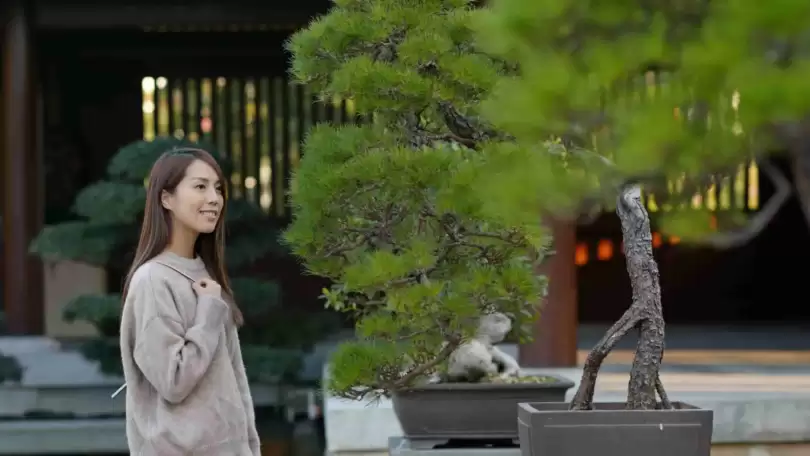
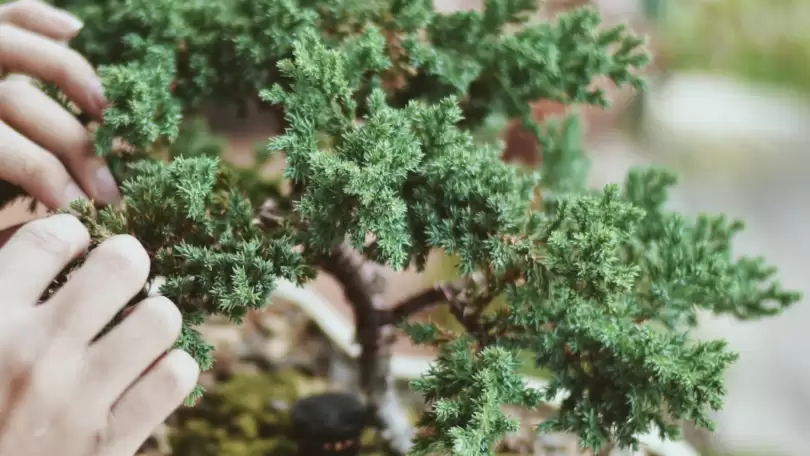
1 Comment